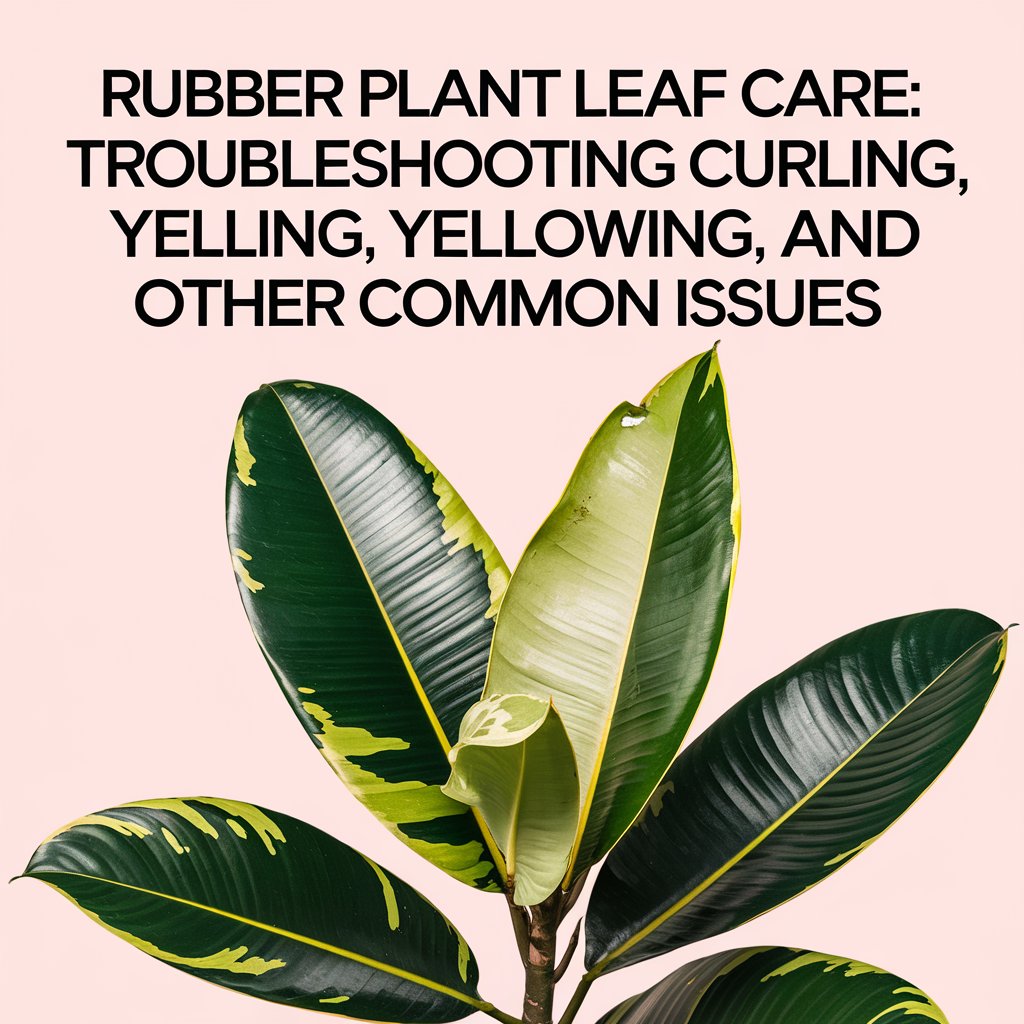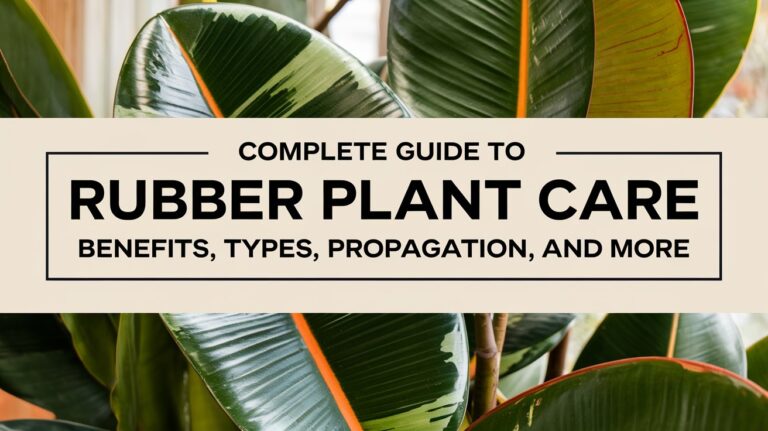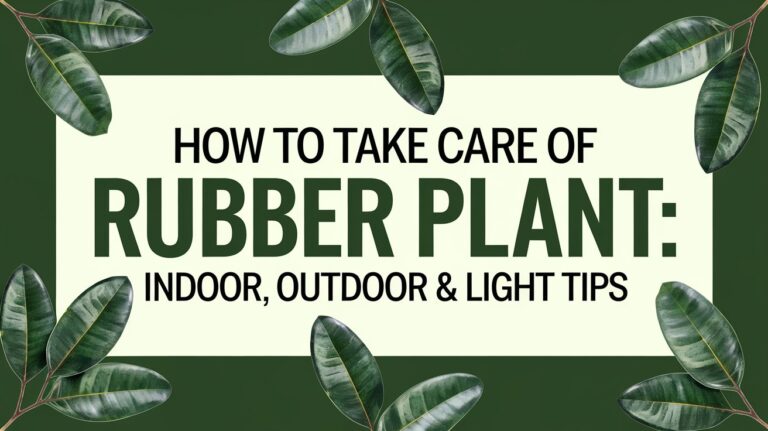If you’ve ever owned a rubber plant, you know the real star of this beautiful indoor plant is its glossy, vibrant leaves. Whether it’s the deep green of a classic variety or the stunning patterns of a variegated rubber plant leaf, these plants can elevate any space with their elegance. But what happens when those leaves start curling, yellowing, or showing other issues? Let’s dive into my personal journey with rubber plant leaf care and explore how to tackle common problems while keeping this beauty thriving.
Why Healthy Leaves Are the Heart of Rubber Plant Care
Rubber plants (Ficus elastica) are cherished for their striking foliage. The smooth and slightly leathery rubber plant leaf type makes it not just a treat for the eyes but also an easy-to-maintain houseplant. However, their leaves are also the first to show signs of trouble. When I noticed rubber plant leaf curling on my new plant, I realized the importance of proper care.
Healthy leaves are more than just pretty—they’re a sign that your plant is getting the right balance of water, light, and nutrients. Whether it’s a closed leaf rubber plant or a droopy leaf rubber plant, any deviation in appearance can be a clue that something’s off.
Common Rubber Plant Leaf Issues and How to Solve Them
1. Rubber Plant Leaf Curling
Curling leaves are one of the most frequent problems with rubber plants, and I’ve dealt with it more times than I can count.
Causes:
- Underwatering or overwatering.
- Low humidity levels.
- Sudden temperature changes.
My Fix: When I noticed rubber plant leaf curling, I adjusted my watering routine and placed a humidifier near the plant. Rubber plants thrive in stable environments with consistent moisture levels.
2. Rubber Plant Leaf Turning Yellow
A rubber plant leaf turning yellow can be alarming, but it’s often a sign of overwatering or poor drainage.
Causes:
- Waterlogged soil.
- Lack of nutrients.
- Natural aging of older leaves.
My Fix: I repotted my plant using well-draining soil and reduced watering. Feeding it a liquid fertilizer during its growing season also helped bring back its lush green color.
3. Light Green Spots on Rubber Plant Leaf
Ever noticed a light green spot on a rubber plant leaf? This is often a sign of pest activity or nutrient deficiency.
My Fix: Cleaning the leaves regularly with a damp cloth keeps pests like spider mites at bay. For nutritional gaps, I added a balanced houseplant fertilizer to its routine.
4. Droopy and Dull Leaves
A droopy leaf rubber plant or a dull leaf rubber plant often results from inconsistent watering or insufficient light.
My Fix: Moving the plant to a spot with bright, indirect light and ensuring consistent watering revived its droopy leaves. Regular cleaning brought back their natural shine.
Tips for Preventing Rubber Plant Leaf Problems
One thing I’ve learned is that prevention is better than cure when it comes to rubber plant leaf issues. Here’s what works for me:
- Understand Rubber Plant Leaf Types:
Whether smooth or slightly rough, rubber plant leaves need gentle care. Regular dusting ensures their pores remain unclogged. - Water Smartly:
Always check the soil before watering. Too much water can lead to a closed leaf or yellowing. - Find the Leaf Node:
If you’re propagating a rubber plant from a leaf, identifying the rubber plant leaf node is crucial for success. A node is where the roots will emerge, so cut just below it. - Place in Ideal Lighting:
Indirect light is your plant’s best friend. Avoid direct sunlight, which can scorch leaves or cause spotting.
Creative Rubber Plant Leaf Art
Beyond their functional beauty, have you ever tried rubber plant leaf art? Their sturdy leaves make for excellent materials for crafting or printing. I’ve used rubber plant leaf cutting art to create leaf imprints on paper and even experimented with dried leaves in resin projects. It’s a fun way to celebrate their beauty!
The Benefits of Rubber Plant Leaves
The rubber plant’s benefits go beyond aesthetics. Their ability to purify the air, balance indoor humidity, and promote positive energy makes them a must-have for any home. Plus, their low-maintenance nature means they’re perfect even for beginner plant parents.
FAQs: Tackling Rubber Plant Leaf Issues
1. Why is my rubber plant leaflet curling?
Curling could be due to underwatering, low humidity, or temperature stress. Adjust the environment to restore its health.
2. What causes a light green spot on rubber plant leaves?
This could be a sign of pests or nutrient deficiency. Clean the leaves and fertilize as needed.
3. How do I propagate a rubber plant from a leaf?
To propagate rubber plants, find the rubber plant leaf node, cut just below it, and place it in water or soil for rooting.
4. Are yellow leaves a sign of overwatering?
Yes, yellow leaves often indicate overwatering or poor soil drainage.
Conclusion
Caring for rubber plant leaves is an ongoing journey, but it’s incredibly rewarding. From tackling curling or yellowing leaves to experimenting with rubber plant leaf art, these plants offer endless ways to engage with their beauty. Remember, small changes in care—like adjusting light or watering—can make a world of difference.
Have you faced any rubber plant leaf issues or tried your hand at crafting with its leaves? Share your experiences in the comments—I’d love to hear your tips and stories!
Hi, I’m Pritesh, the heart and hands behind Roots & Earth. My love for plants started when I was just 5 years old, planting trees alongside my grandfather. Those early experiences in the garden left a lasting impression, shaping my deep connection to nature and sparking a lifelong passion for nurturing green spaces.
With an MBA under my belt, I’ve blended my business acumen with my love for gardening, creating Roots & Earth as a way to share my knowledge and inspire others. When I’m not working in my own home garden, you’ll find me traveling to the mountains—my favorite getaway for reconnecting with the natural world.
At Roots & Earth, I’m here to guide you on your gardening journey, whether you’re a seasoned green thumb or just starting out. Together, let’s cultivate beautiful, thriving spaces that enrich our lives and the earth.




